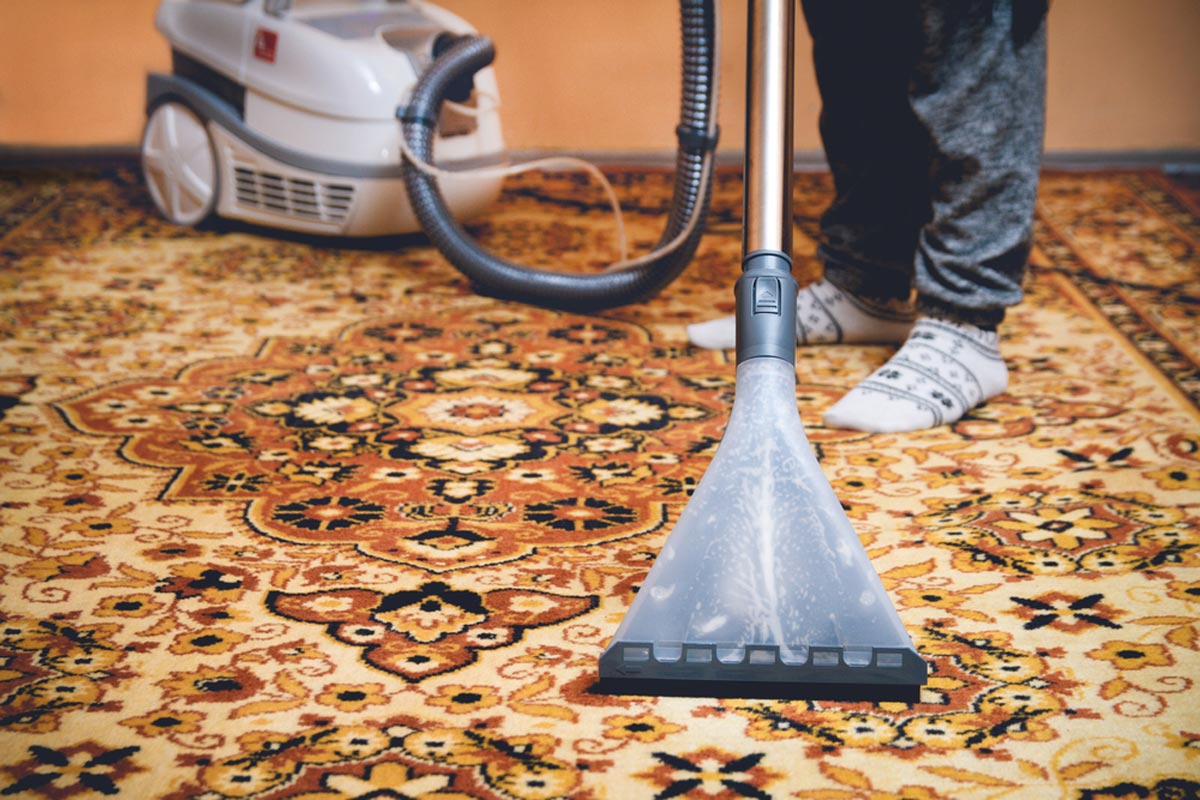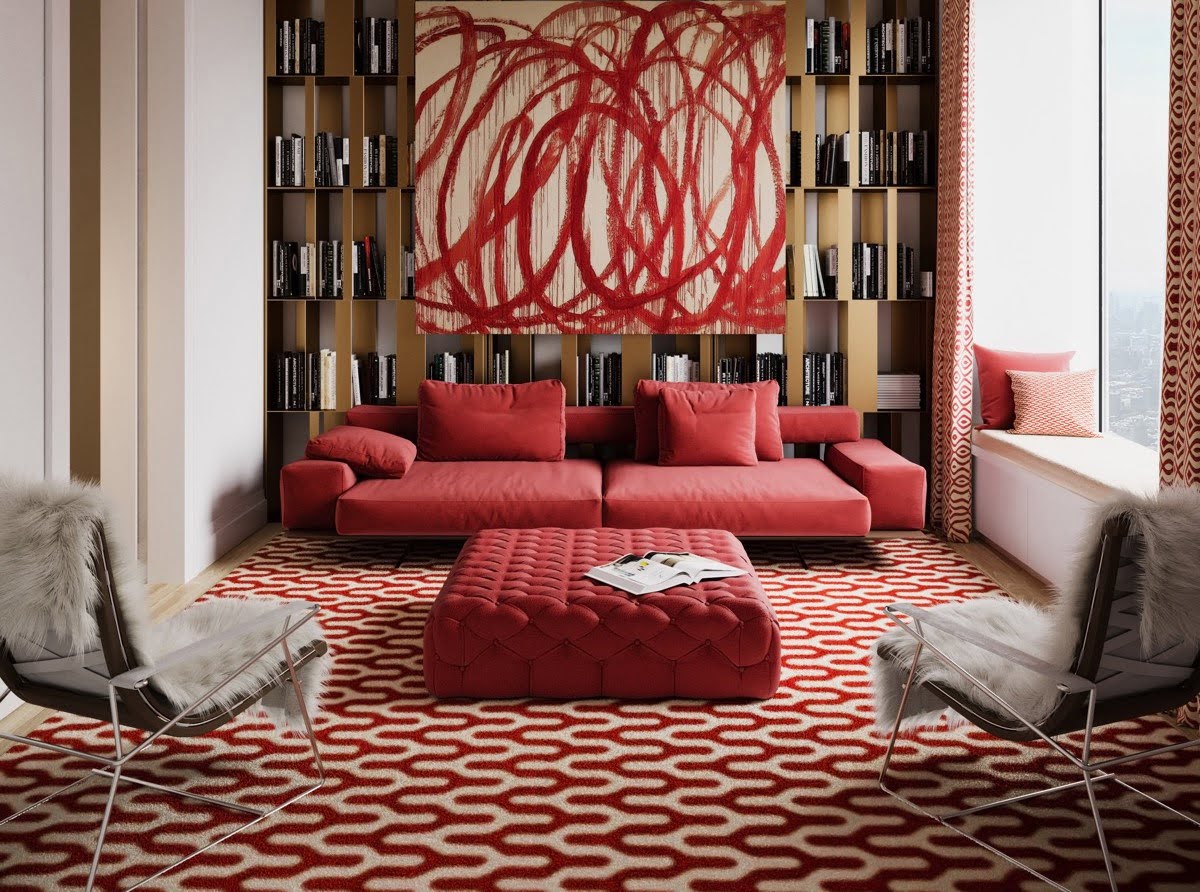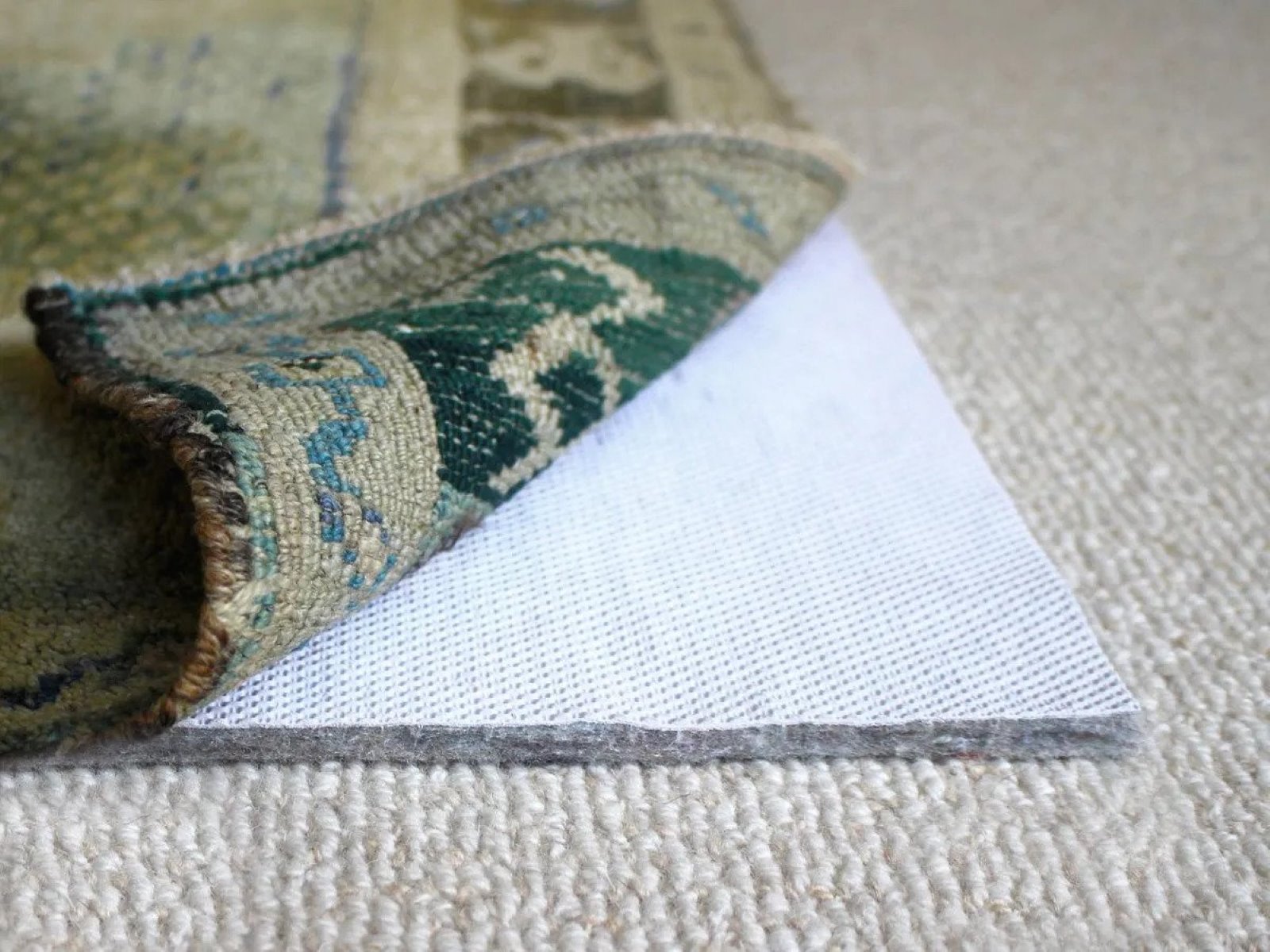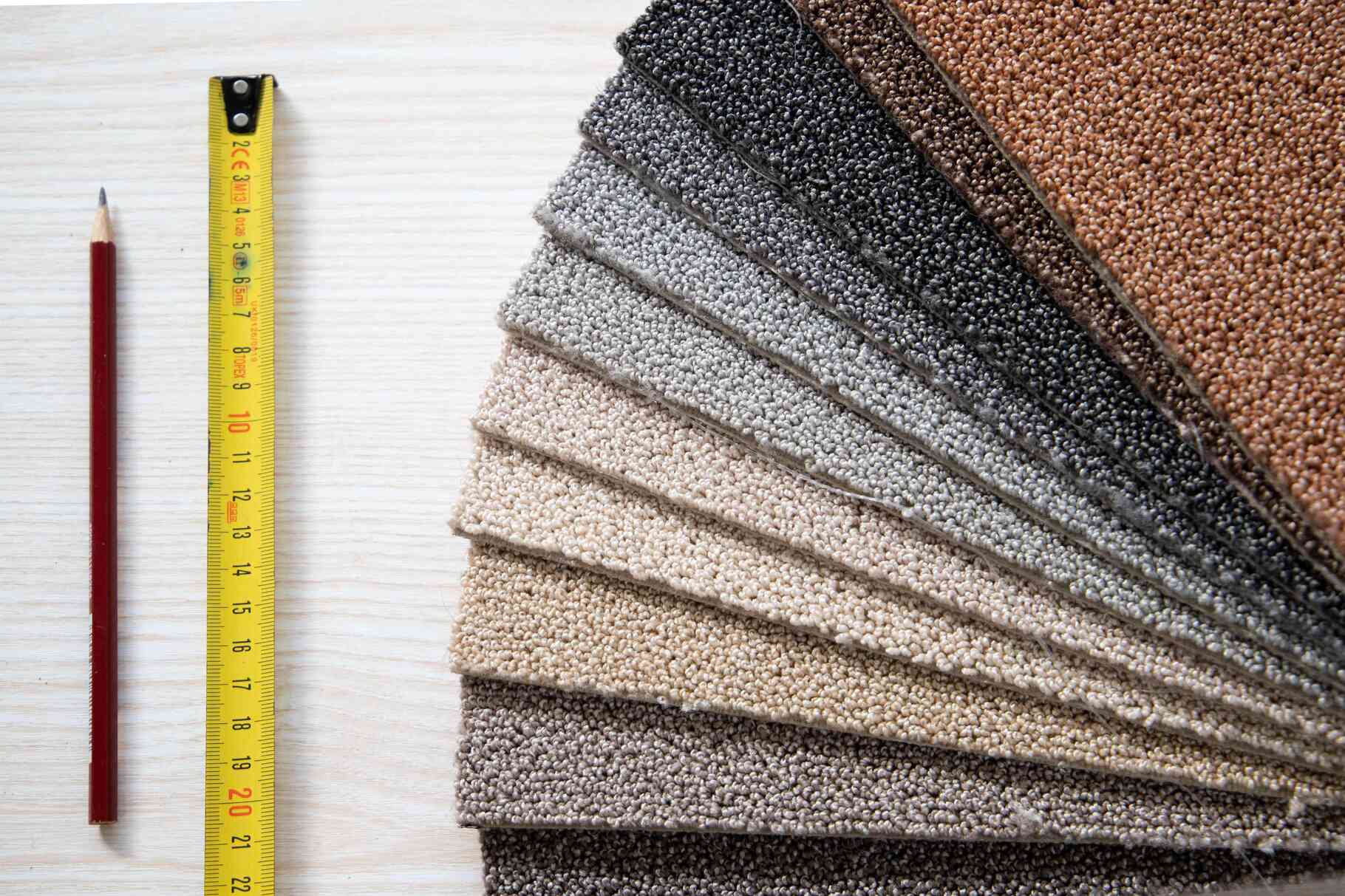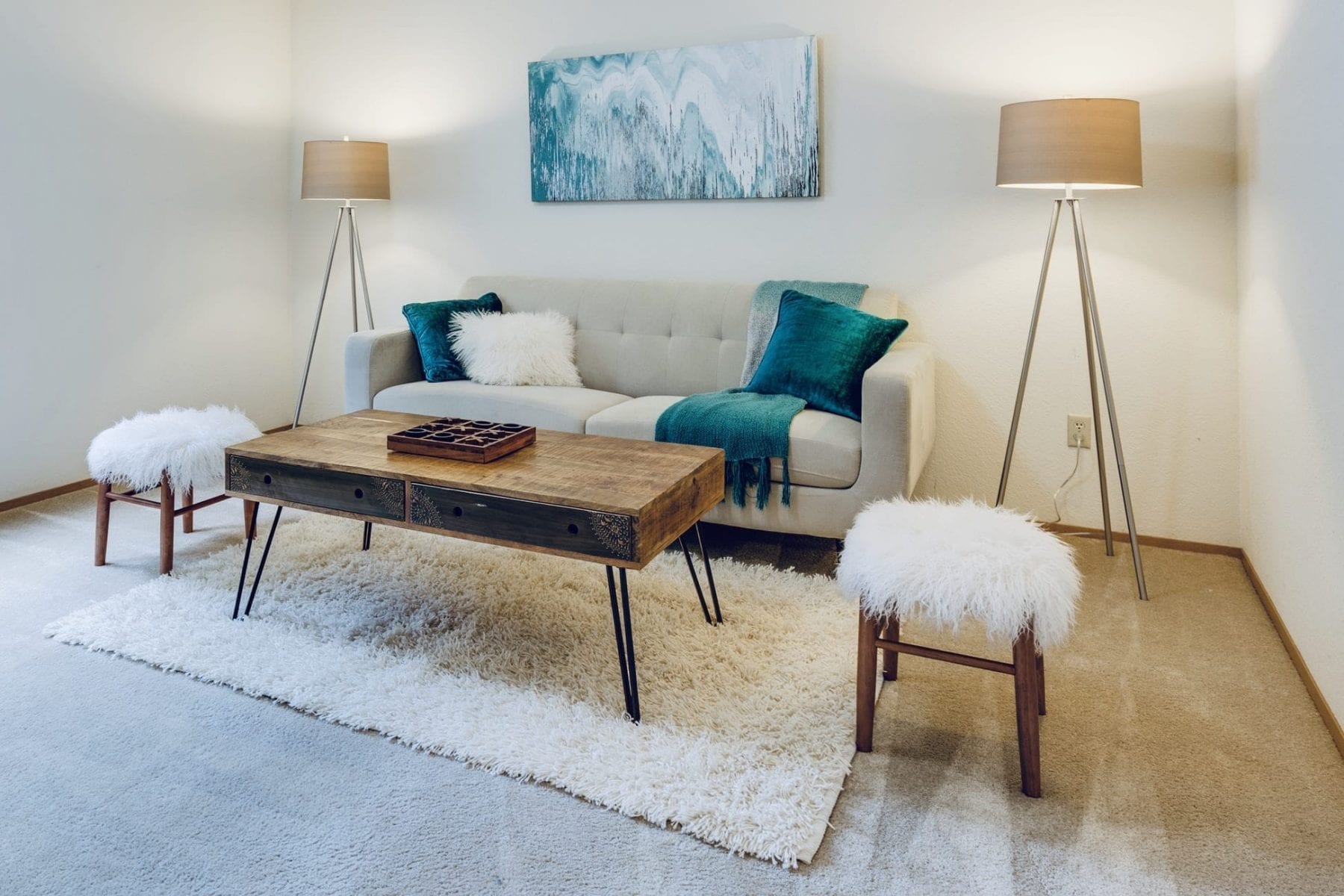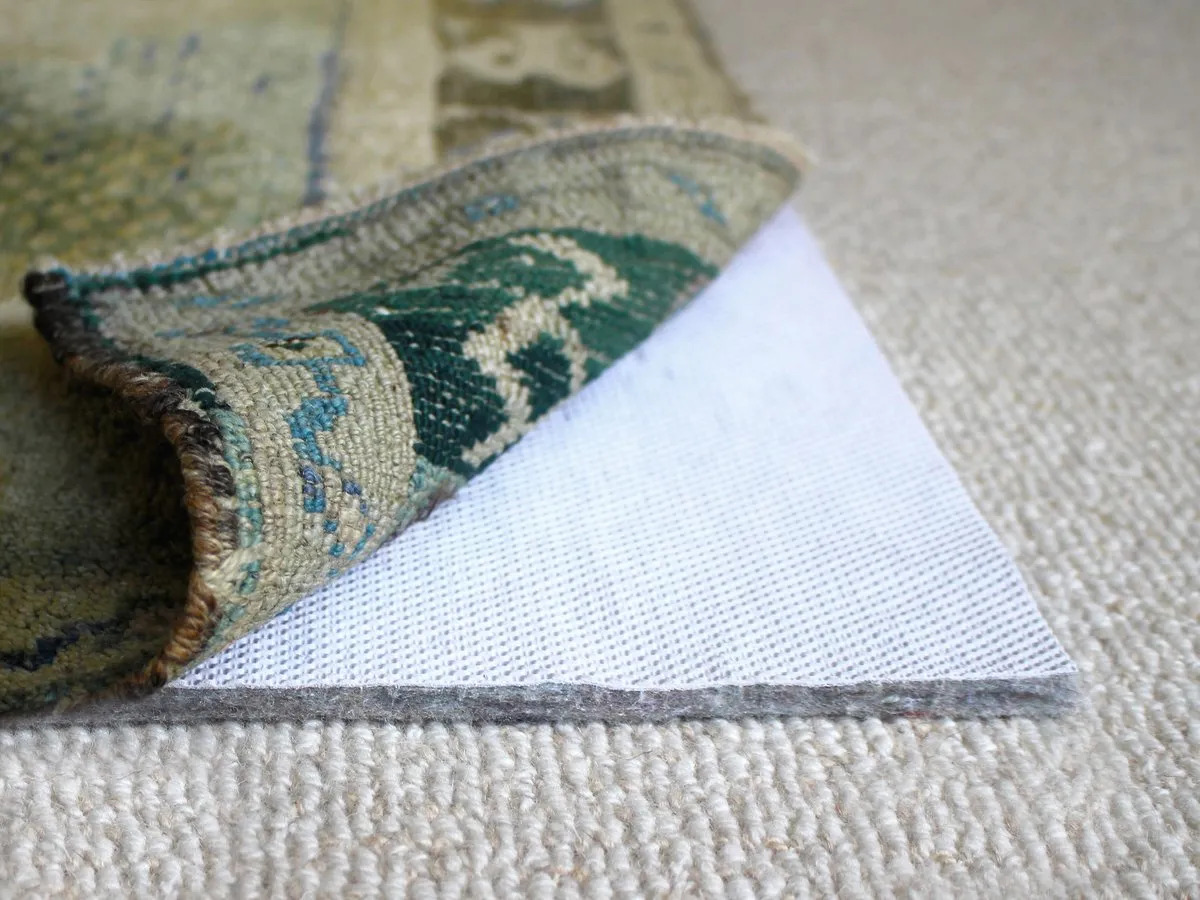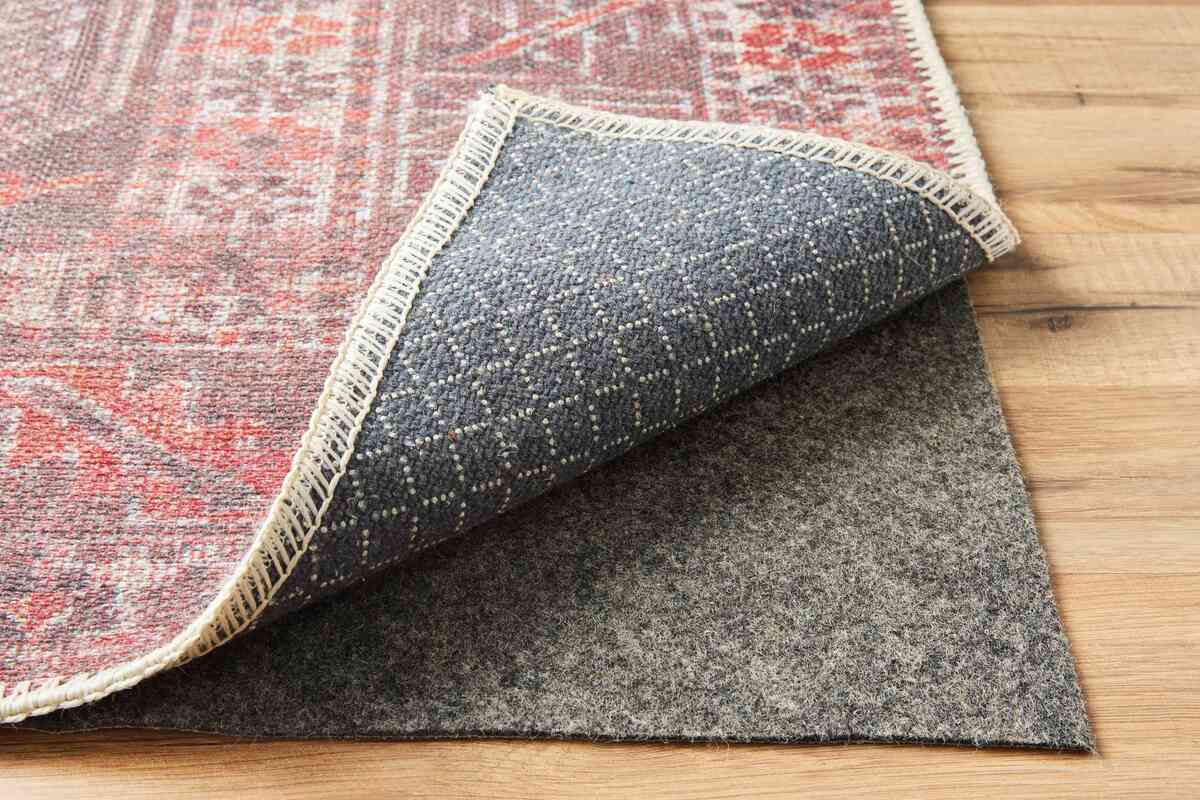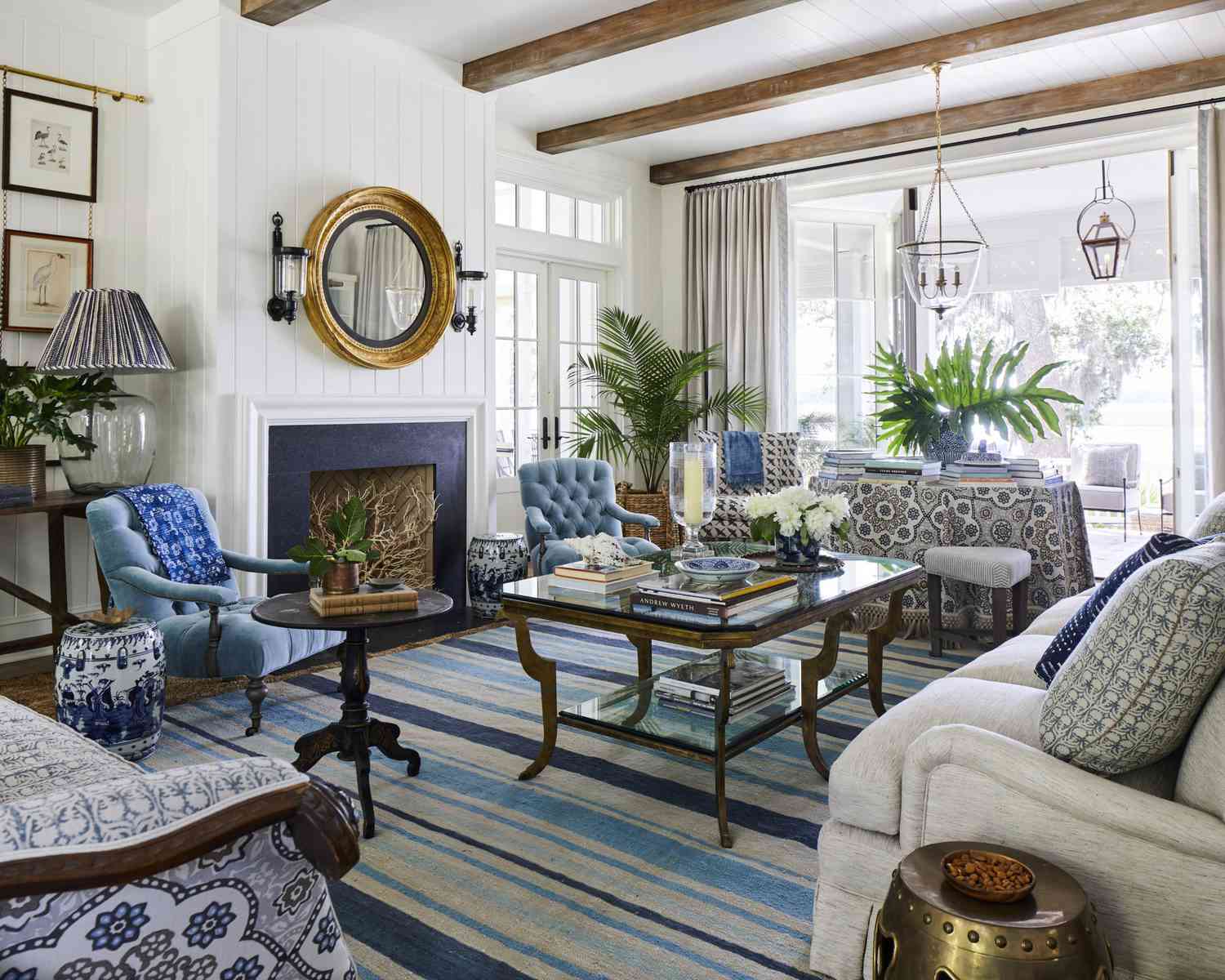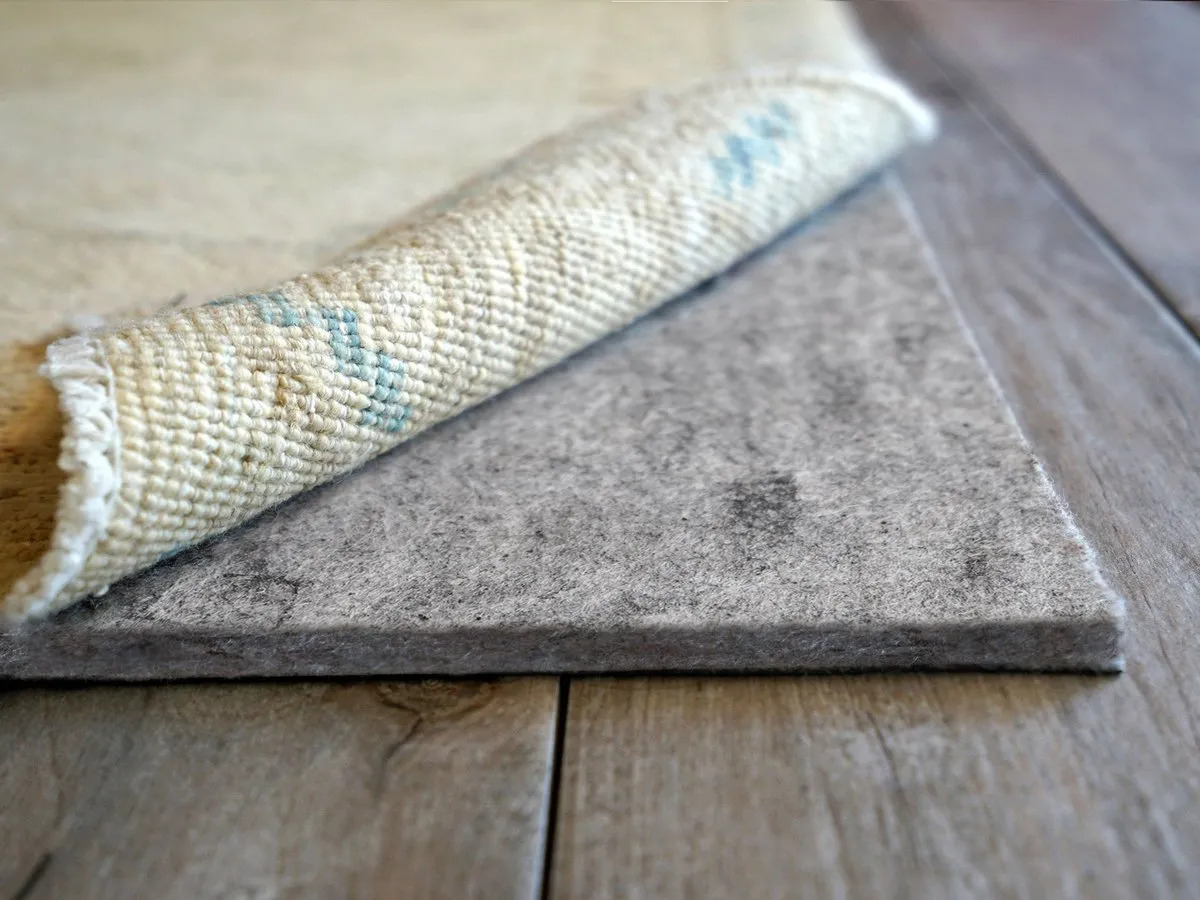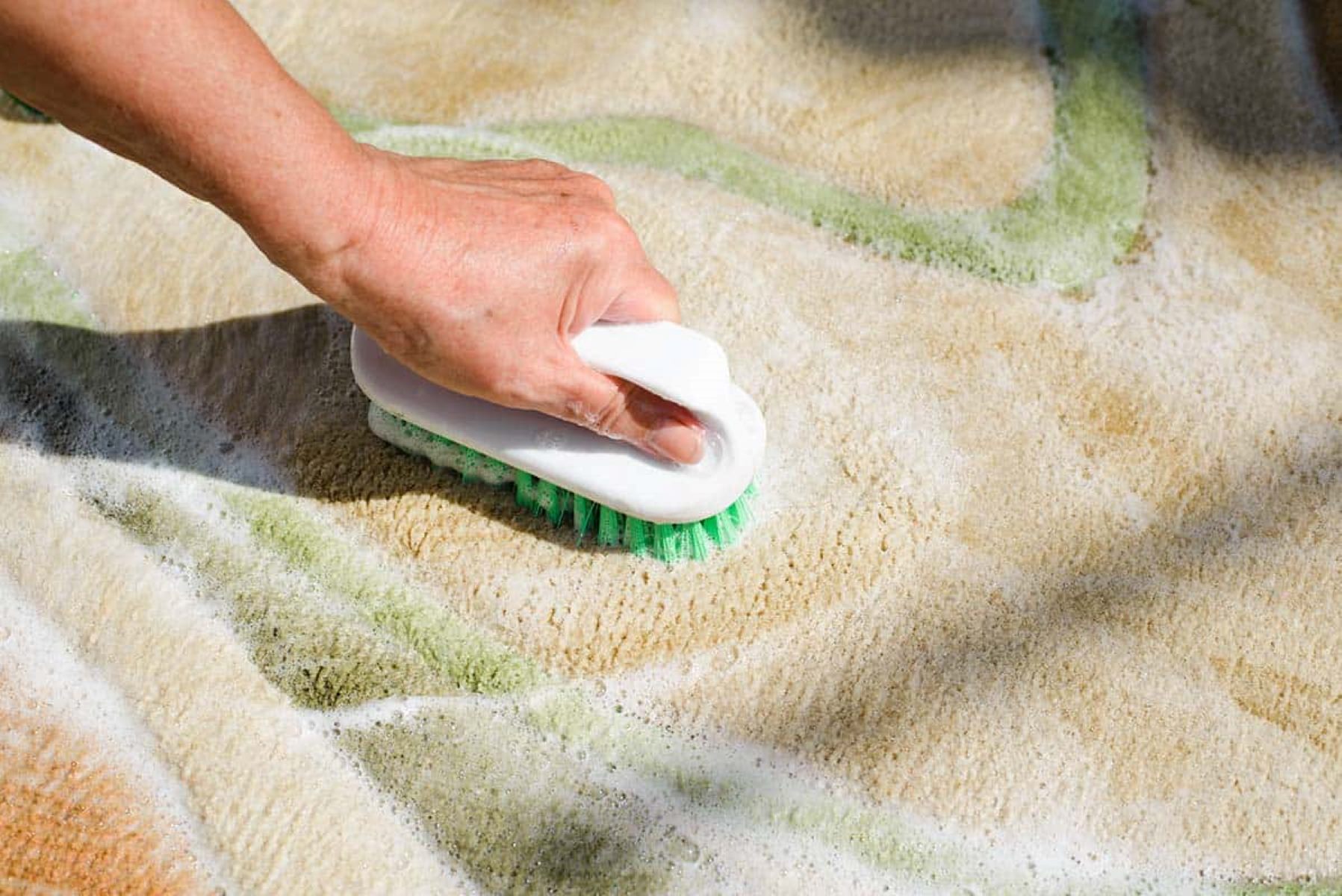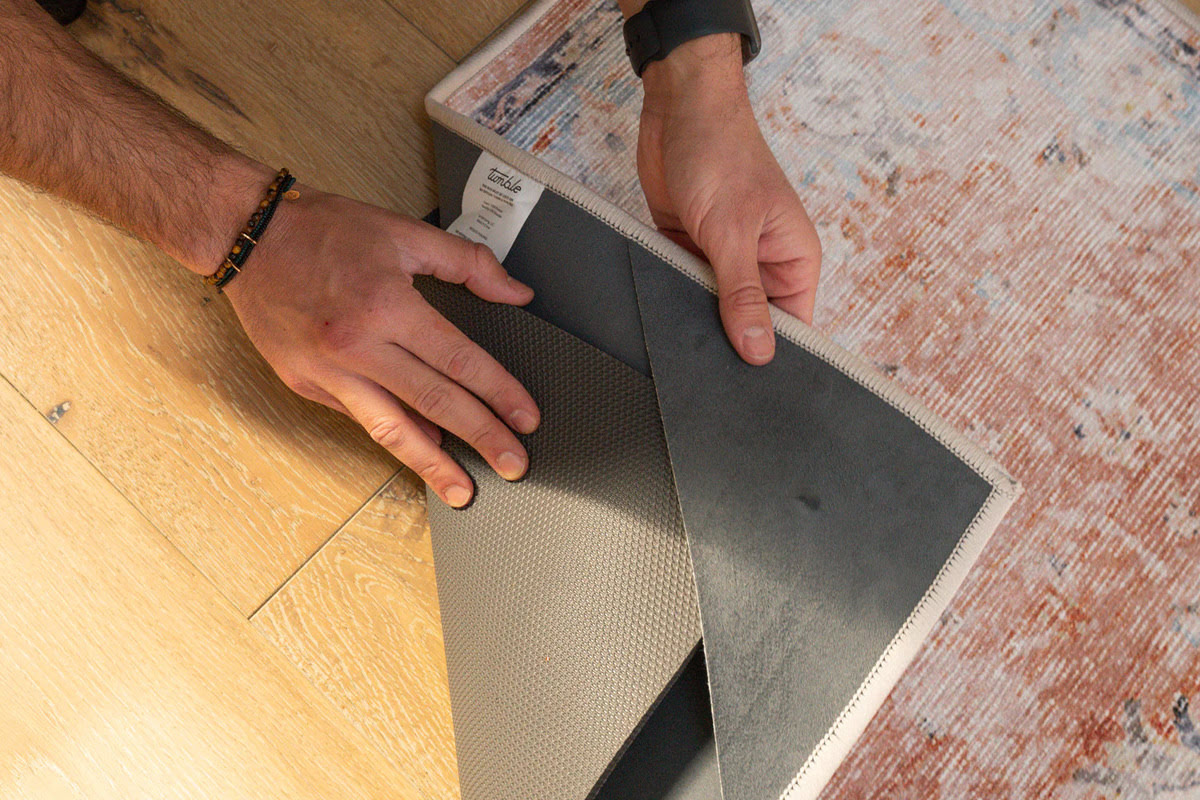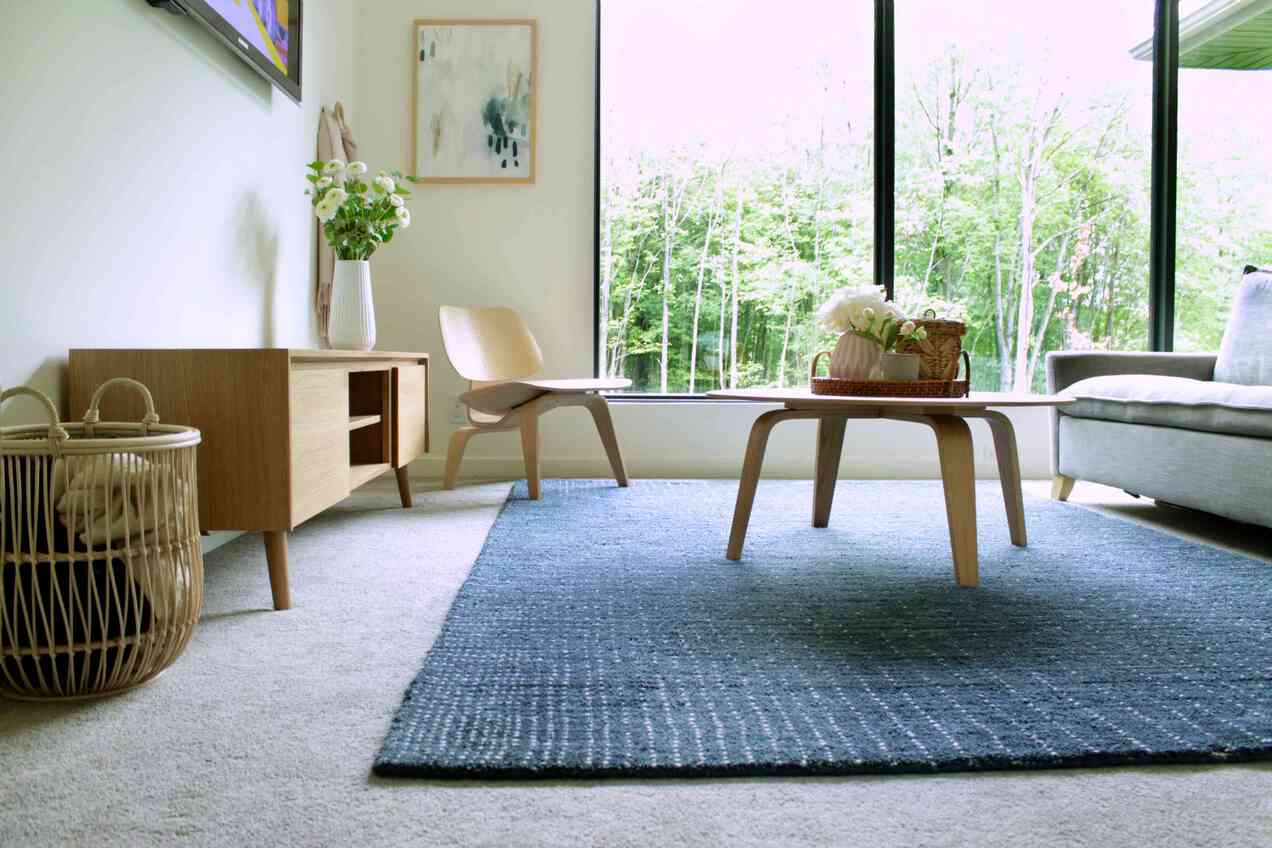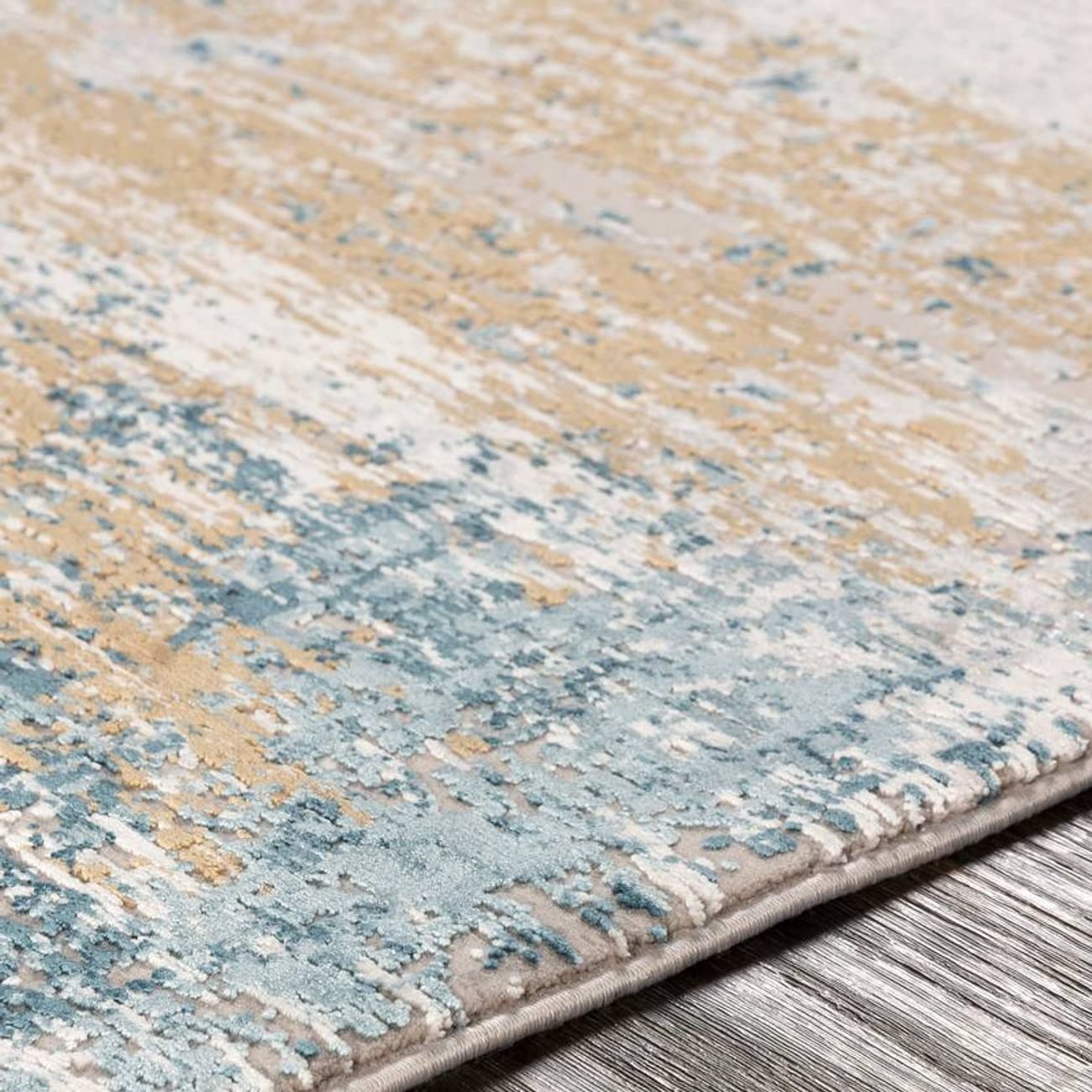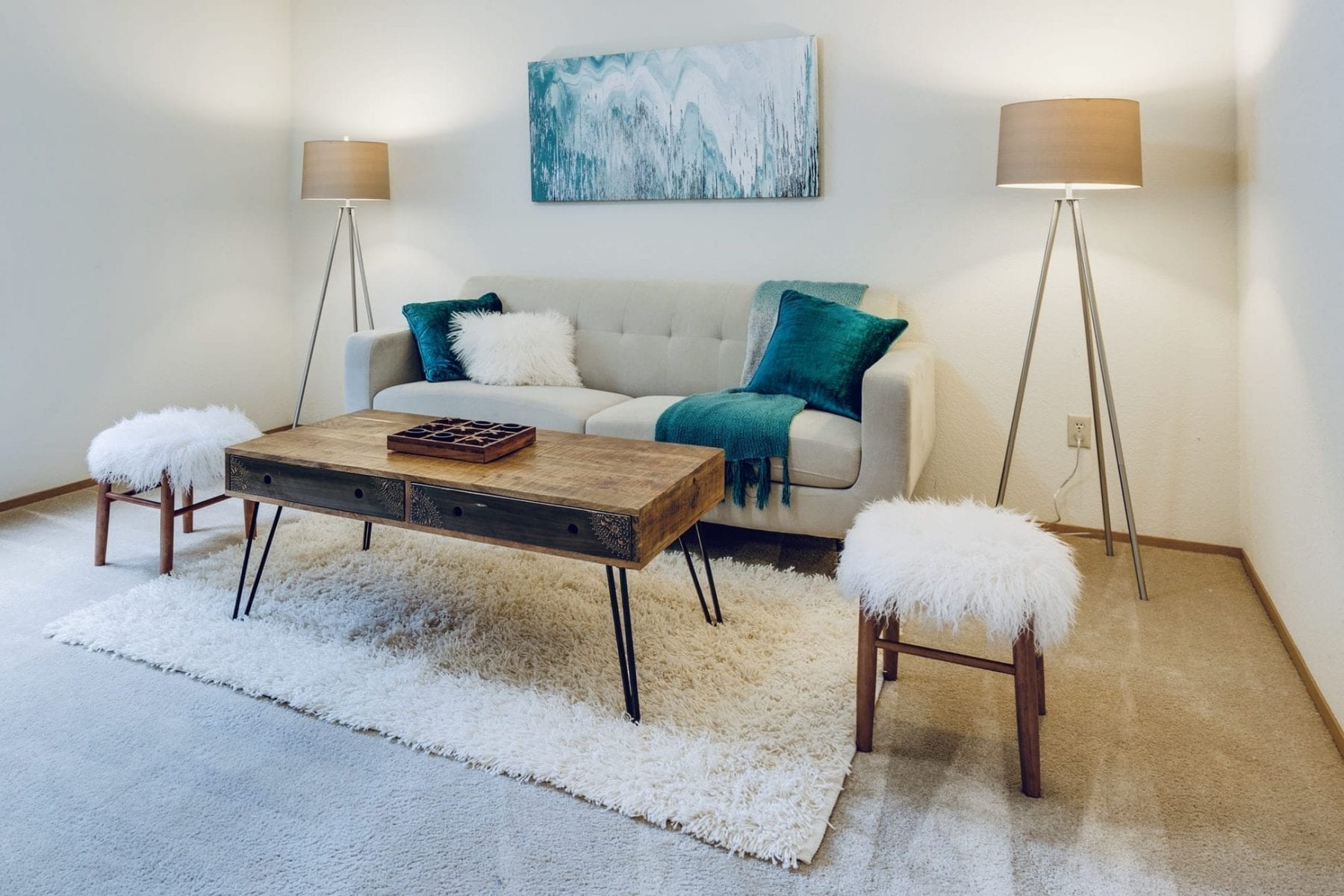

Articles
How To Style A Rug On A Carpet
Modified: August 28, 2024
Discover the best articles on how to style a rug on a carpet for a perfect blend of functionality and style. Expert tips and creative ideas await!
(Many of the links in this article redirect to a specific reviewed product. Your purchase of these products through affiliate links helps to generate commission for Storables.com, at no extra cost. Learn more)
Introduction
Styling a rug on a carpet may seem like a design challenge at first, but with a little creativity and know-how, you can turn this potential stumbling block into a striking statement. While many homeowners opt for bare carpets, adding a rug on top can instantly elevate the overall aesthetic of a room. It not only adds warmth and texture but also adds visual interest and defines different areas within a space.
Why would you want to style a rug on a carpet, you might ask? Well, there are several reasons. First and foremost, it adds an extra layer of comfort underfoot. Whether you have hardwood flooring, tile, or even an existing carpet, a rug can provide additional plushness and cushioning. Additionally, it can help anchor furniture, create a more cohesive look, and bring a sense of coziness to the room. So, if you’re looking to give your space a makeover and add some personality, here’s how to style a rug on a carpet like a pro.
Key Takeaways:
- Elevate your space by layering rugs on carpets to add depth, define areas, and create a cozy atmosphere. Experiment with textures, patterns, and placements to achieve a unique and inviting look.
- Anchor rugs with furniture to create stability, define spaces, and add a polished touch to your room. Consider scale, proportion, and final touches to achieve a cohesive and visually appealing arrangement.
Read more: How To Clean A Carpet Rug
Why Style a Rug on a Carpet?
Styling a rug on a carpet might seem counterintuitive at first, but there are several reasons why it’s a design choice worth considering.
Firstly, layering rugs adds depth and visual interest to a room. It breaks up the monotony of a large expanse of carpet and helps create defined spaces within the room. By using different textures, patterns, or colors, you can add a touch of personality and warmth to the space.
Secondly, adding a rug on top of a carpet helps to anchor furniture. Especially in open-concept spaces or large rooms, furniture can feel disconnected and float around aimlessly. Placing a rug underneath a coffee table or dining table instantly grounds the furniture and creates a cohesive look. It helps to create a visual boundary for the seating area or dining space, making it feel more intimate.
Another reason to style a rug on a carpet is to hide any imperfections or stains on the carpet. Over time, carpets may wear out or become discolored in high-traffic areas. By layering a rug on top, you can easily cover these areas, giving your room a fresh and polished look.
Furthermore, layering rugs allows you to experiment with different patterns and colors. It gives you the opportunity to mix and match different styles and create a unique look that reflects your personal taste. Whether you prefer a bold geometric pattern or a more subtle texture, incorporating a rug on a carpet can help you achieve the desired aesthetic.
Lastly, styling a rug on a carpet adds an extra level of comfort. While carpets provide a soft surface for walking or sitting, adding a rug further enhances the coziness of the room. It creates a plush and inviting atmosphere, making the space feel more welcoming and enjoyable.
In summary, styling a rug on a carpet is a design choice that can enhance the overall look and feel of a room. It adds depth, defines spaces, anchors furniture, hides imperfections, and adds a touch of comfort. So, don’t be afraid to get creative and experiment with different rug styles and placements to create a truly unique and inviting space.
Choosing the Right Rug
When it comes to styling a rug on a carpet, selecting the right rug is key to achieving the desired effect. Here are some factors to consider when choosing the perfect rug for your carpeted room:
1. Size: Start by determining the appropriate size for your rug. Consider the dimensions of the room and the layout of your furniture. A rug that is too small will look out of place, while one that is too large may overwhelm the space. Aim for a rug that is large enough to fit all the furniture within a seating area or under a dining table comfortably.
2. Color and Pattern: The color and pattern of the rug should complement the existing colors and patterns in the room. If your carpet is a solid color, you have more flexibility in choosing a rug with bold patterns or vibrant colors. On the other hand, if your carpet already has a pattern, opt for a rug with a subtle or complementary design to avoid visual overload.
3. Material: Consider the material of the rug based on the level of foot traffic and the desired texture. If the carpeted area experiences heavy use, opt for a durable and easy-to-clean material like wool or synthetic fibers. For a softer and cozier feel, consider rugs made of natural materials like sisal or jute.
4. Style: Choose a rug style that fits the overall aesthetic of the room. If your room has a contemporary or modern design, a rug with clean lines and geometric patterns may work well. For a more traditional or eclectic look, go for rugs with intricate designs or vintage-inspired patterns.
5. Functionality: Consider the functionality of the rug. If you’re placing the rug in a high-traffic area, opt for a low-pile or flatweave rug that is easy to clean and won’t show wear and tear easily. In areas where comfort is a priority, such as a living room or bedroom, choose a plush or shag rug that provides a soft and luxurious feel.
By considering these factors, you can choose a rug that not only adds visual interest but also blends seamlessly with your carpet and enhances the overall look of the room. Remember to take measurements, explore different styles, and think about the practicality of the rug to make an informed decision.
Consider Scale and Proportion
When styling a rug on a carpet, it’s important to pay attention to scale and proportion. This ensures that the rug doesn’t overpower the carpet or get lost in the room. Here are some tips to consider when it comes to scale and proportion:
1. Size: The size of the rug should be proportionate to the size of the room. In a large room, opt for a larger rug that fits the seating area or dining table comfortably. This helps to anchor the furniture and create a cohesive look. In a smaller room, choose a smaller rug that doesn’t overwhelm the space.
2. Placement: Consider where you want to place the rug on the carpet. If you have a specific seating area or dining space, make sure the rug is large enough to fit all the furniture within that area. Avoid placing a small rug in the center of a large carpet, as it can create an unbalanced and disjointed look.
3. Proportion with Furniture: The rug should be proportionate to the size of the furniture. In a living room, for example, the front legs of the sofa and chairs should ideally be placed on the rug, while the back legs can sit on the carpet. This helps to create a visually pleasing arrangement and ensures that the rug doesn’t appear to be floating in the room.
4. Balance: Consider the overall balance of the room. If you have a large sectional sofa, for instance, a larger rug that extends beyond the seating area can help to balance the visual weight of the furniture. On the other hand, if you have smaller furniture pieces, a smaller rug can create a more intimate and cozy feel.
5. Layering: If you’re layering rugs, pay attention to the scale and proportion of each rug. The bottom rug should be larger and act as the base, while the top rug can be smaller and add a pop of color or texture. Make sure the rugs complement each other in terms of size and design to create a harmonious look.
By considering scale and proportion, you can create a well-balanced and visually appealing arrangement when styling a rug on a carpet. It ensures that the rug enhances the overall look of the room without overpowering the carpet or furniture. Experiment with different sizes and placements until you find the perfect balance for your space.
Opt for Contrasting Patterns
When styling a rug on a carpet, one effective way to create visual interest is by opting for contrasting patterns. This technique adds depth and personality to a room, making it stand out. Here’s how to incorporate contrasting patterns effectively:
1. Consider the Carpet: Take a close look at the pattern of your carpet. If it’s a solid color or has a subtle pattern, you have the freedom to choose a rug with a bolder pattern. On the other hand, if your carpet already has a busy pattern, it’s best to select a rug with a simpler design to avoid overwhelming the space.
2. Harmonize Colors: While contrasting patterns can create a striking effect, it’s important to ensure that the colors of the rug and carpet harmonize well. Choose a rug that complements or contrasts with the primary colors in the room. For example, if your carpet has shades of blue, a rug with a contrasting pattern in complementary colors like yellow or orange can add a vibrant touch.
3. Mix Pattern Sizes: To create balance and visual interest, consider mixing patterns of different sizes. If your carpet has a small pattern, choose a rug with a larger scale pattern. Alternatively, if your carpet has a large pattern, opt for a rug with a smaller, more intricate design. This contrast in pattern sizes adds visual depth and prevents the room from feeling too busy.
4. Balance Boldness: When incorporating contrasting patterns, it’s important to maintain a sense of balance. If your rug has a bold and busy pattern, consider keeping the rest of the room’s decor more subdued. This allows the rug to be the focal point and prevents overwhelming the space. Alternatively, if you prefer a subtler rug pattern, you can introduce bolder patterns in other elements of the room, such as pillows or curtains.
5. Flow and Cohesion: To create a cohesive look, ensure that the contrasting patterns flow with the overall style and theme of the room. Consider the existing decor, furniture, and accessories, and choose a rug that harmonizes with the overall aesthetic. This helps to tie the entire room together and create a visually pleasing space.
By opting for contrasting patterns, you can transform a plain carpeted room into a visually captivating space. Just remember to consider the pattern and color of the carpet, harmonize colors, mix pattern sizes, balance boldness, and maintain flow and cohesion with the rest of the room’s decor. With these tips, you can achieve a striking and harmonious look when styling a rug on a carpet.
Read more: How To Turn A Carpet Into A Rug
Experiment with Texture
When styling a rug on a carpet, incorporating different textures can significantly enhance the overall look and feel of the room. Texture adds depth and tactile interest, making the space more visually appealing and inviting. Here are some ways to experiment with texture:
1. Mix Materials: One of the easiest ways to introduce texture is by choosing a rug that is made of a different material than the carpet. If your carpet is plush or has a smooth texture, consider opting for a rug with a more textured material, such as a shag rug, a woven rug, or a natural fiber rug like jute or sisal. This contrast in materials creates visual interest and adds a tactile element to the space.
2. Layering: Layering rugs is another effective way to incorporate texture. Choose a rug with a different texture and layer it on top of the carpet. For example, you can layer a fluffy sheepskin rug or a textured cowhide rug over a smooth carpet. This not only adds visual interest but also provides a cozy and luxurious underfoot experience.
3. Play with Pile Heights: Experiment with rugs that have different pile heights. Pile refers to the height and density of the fibers in a rug. If your carpet has a low pile, consider adding a rug with a high pile for added texture and softness. Conversely, if your carpet is plush, opt for a rug with a lower pile or a flatweave rug to create contrast.
4. Consider Patterns and Weaves: Texture can also be introduced through the patterns and weaves of the rug. Look for rugs with raised patterns, such as a carved or embossed design, to add texture and dimension. Alternatively, consider rugs with a basketweave, herringbone, or chevron pattern for a visually interesting texture.
5. Mix Smooth and Textured Surfaces: To create a dynamic interplay of texture, combine smooth and textured surfaces in the room. If your carpet has a smooth texture, pair it with a rug that has a more textured surface. Conversely, if your carpet has a textured or patterned design, juxtapose it with a rug that has a smoother texture. This contrast adds visual intrigue and depth to the space.
Experimenting with texture allows you to create a visually captivating and tactilely engaging environment. Whether it’s through mixing materials, layering rugs, playing with pile heights, considering patterns and weaves, or combining smooth and textured surfaces, incorporating texture adds visual interest and makes your space more inviting. So, don’t be afraid to explore different textures when styling a rug on a carpet.
When styling a rug on a carpet, choose a rug with a contrasting color or pattern to create visual interest. Use a rug pad to prevent slipping and add a non-slip rug gripper for extra security.
Placement Techniques
When it comes to styling a rug on a carpet, there are various placement techniques you can utilize to achieve different effects. Here are some placement ideas to help you create a visually appealing and functional arrangement:
1. Centered Placement: One common technique is to place the rug in the center of the room or under the focal point of the space, such as a coffee table or dining table. This creates a defined area and adds a focal point to the room. It works well in open-concept spaces or larger rooms where you want to create a distinct seating or dining area.
2. Off-Center Placement: For a more casual and eclectic look, consider placing the rug off-center. This can be done by positioning the rug at an angle or slightly shifting it to one side of the room. Off-center placement adds visual interest and a sense of whimsy to the space. It works well in rooms with asymmetrical layouts or when you want to create a more relaxed atmosphere.
3. Diagonal Placement: Placing the rug on a diagonal angle can add a sense of movement and energy to the room. This technique works particularly well in square or rectangular rooms, as it breaks up the boxy shape and creates a more dynamic visual flow.
4. Runner Rug: In long hallways or narrow rooms, using a runner rug on top of the carpet can help define the space and add visual interest. Make sure to choose a runner rug that is proportional to the length and width of the hallway or room.
5. Clustered Placement: Another unique placement idea is to create a clustered arrangement with multiple rugs. This technique works well in larger rooms with multiple sitting areas or when you want to create distinct zones within a space. Choose rugs of different sizes and shapes and arrange them in an intentional and cohesive manner.
6. Border Effect: To draw attention to the rug and create a border effect, leave a visible border of the carpet around the edges of the rug. This technique works well when the carpet has a plain or neutral color, as it emphasizes the rug and creates a visually pleasing contrast.
Remember, the placement technique you choose should consider the size and shape of the room, the furniture arrangement, and the overall aesthetic you want to achieve. Play around with different placement ideas and assess how they enhance the space. Don’t be afraid to experiment and trust your creative instincts when styling a rug on a carpet.
Layering Rugs
Layering rugs is a popular trend in interior design that adds depth, texture, and visual interest to a space. When done right, it can transform a room from ordinary to extraordinary. Here are some tips to help you master the art of layering rugs:
1. Choose the Right Combination: Start by selecting rugs that complement each other in terms of color, pattern, and texture. Consider using a larger, neutral rug as the base layer, which acts as a foundation for the smaller rug on top. The top rug can be bolder, with a different pattern or texture to add visual interest.
2. Size Matters: Ensure that the top rug is smaller than the base rug to create a layered effect. The top rug should fit comfortably within the space defined by the base rug. This helps to maintain proportion and balance in the room.
3. Overlapping or Centered Placement: Depending on the look you want to achieve, you can either overlap the rugs partially or place them centrally. Overlapping the rugs adds a casual and bohemian vibe, while a centered placement creates a more structured and symmetrical look.
4. Contrast Shape and Texture: Experiment with different shapes and textures to create contrast and visual intrigue. For example, if the base rug is rectangular, consider using a round or oval rug as the top layer. Mix textures such as a plush rug on top of a flatweave or sisal rug to add dimension and tactile interest.
5. Play with Patterns: Layering rugs allows you to showcase multiple patterns in a room. To create a cohesive look, choose rugs that share similar colors or patterns. Alternatively, you can mix and match patterns for a bold and eclectic style. Just make sure the patterns don’t clash, and there is a common element that ties them together.
6. Consider Thickness: Take into account the thickness of the rugs when layering. Avoid placing a thick rug directly on top of a thick carpet, as it may create an unstable and uneven surface. Instead, choose a thinner rug as the top layer to ensure stability and balance.
7. Placement Under Furniture: When layering rugs, consider placing the bottom rug partially under furniture. This helps to anchor the rugs and create a seamless transition between layers. For example, in a living room, you can place the base rug under the front legs of the sofa and the top rug centered in front of the coffee table.
Layering rugs adds depth, texture, and a sense of personality to a room. It allows you to mix and match different patterns, textures, and colors to create a truly unique and visually appealing space. By following these tips, you can master the art of layering rugs and create a stylish and inviting atmosphere in your home.
Anchor with Furniture
When styling a rug on a carpet, one effective technique to create a cohesive and polished look is to anchor the rugs with furniture. Anchoring with furniture not only helps to define the space but also adds stability and prevents the rugs from shifting. Here are some tips on how to anchor rugs with furniture:
1. Living Room: In the living room, anchor the rug by placing the front legs of the furniture on the rug. This applies to the sofa, chairs, and coffee table. The rug should extend beyond the furniture by a few inches to create a visually pleasing and cohesive look. This arrangement helps to connect the furniture pieces and creates a defined seating area within the room.
2. Dining Room: In the dining room, choose a rug that is large enough to accommodate both the dining table and chairs. The rug should extend beyond the table and chairs when they are pulled out to ensure comfortable seating and prevent chairs from sliding off the rug. This anchoring technique helps to visually anchor the dining area and create a cohesive look.
3. Bedroom: In the bedroom, anchor the rug by placing it underneath the bed. The rug should extend beyond the sides and foot of the bed to create a soft and inviting landing spot when getting out of bed. This anchoring technique not only adds warmth and comfort but also visually grounds the bed in the room.
4. Home Office: In a home office or study area, anchor the rug by placing it under the desk and office chair. This helps to define the workspace and prevents the chair from rolling off the rug. Choose a rug that is large enough to accommodate the desk and chair comfortably, allowing for easy movement and a comfortable working environment.
5. Other Furniture: In addition to the main furniture pieces, consider anchoring smaller accent furniture pieces with rugs as well. For example, you can place a rug underneath a console table or a reading nook to create a cohesive and visually appealing arrangement.
Anchoring the rugs with furniture not only adds stability and prevents shifting but also creates a cohesive and well-defined look in a room. It helps to connect the furniture pieces, visually separates different areas within a space, and adds an element of comfort. By following these tips, you can effectively anchor rugs with furniture and achieve a polished and inviting atmosphere in your home.
Read more: How To Secure A Rug On A Carpet
Create Defined Spaces
Styling a rug on a carpet allows you to create defined spaces within a room, making it feel more organized and visually appealing. By strategically placing rugs, you can separate different areas and give each space a distinct purpose. Here are some tips on how to create defined spaces with rugs:
1. Open Plan Layout: In an open-plan living or dining area, use rugs to delineate the different zones. Place a rug under the seating area to define the conversation or entertainment space, and another rug under the dining table to designate the eating area. This creates visual separation and helps to define the purpose of each space.
2. Foyer or Entryway: Use a rug in the foyer or entryway to set the tone for the rest of the home. Choose a rug that complements the style of the interior and is large enough to accommodate foot traffic coming in and out of the home. This creates a welcoming and defined entry space.
3. Reading Nooks or Study Areas: Create cozy and inviting reading nooks or study areas by placing a rug underneath a comfortable chair or desk. The rug helps to define the space and adds warmth and comfort to the seating or work area. Choose a rug that complements the style and ambiance you want to create.
4. Children’s Play Areas: Use a rug to define and designate play areas for children. Whether it’s a dedicated playroom or a corner of the living room, a rug can create a visually distinct space where children can engage in play. Opt for a soft and durable rug that can withstand heavy use and is easy to clean.
5. Bedroom Seating Areas: If you have a seating area in your bedroom, use a rug to anchor the furniture and create a cozy space for relaxation. Place a rug underneath the seating arrangement, such as a loveseat or a pair of chairs, to separate it from the rest of the bedroom and make it feel like a distinct area for relaxation or reading.
6. Outdoor Areas: Don’t forget about outdoor spaces. Use rugs on your patio, deck, or porch to create defined seating or dining areas. This not only adds style and comfort but also helps to visually separate different zones for entertaining or relaxation.
By using rugs to create defined spaces, you can make your home feel more organized and purposeful. It helps to visually separate different areas within a room, giving each space its own identity and function. Whether it’s an open-plan layout, an entryway, a reading nook, a play area, a bedroom seating area, or an outdoor space, rugs are a versatile tool in creating defined spaces.
Final Touches and Styling Tips
When styling a rug on a carpet, paying attention to the final touches and incorporating styling tips can make a significant difference in the overall aesthetic of the room. Here are some tips to add those finishing touches and elevate the look of your rug on a carpet:
1. Rug Padding: Consider using rug padding underneath the rugs to prevent slipping and provide extra cushioning. Rug padding helps to keep the layered rugs in place and adds an extra layer of comfort underfoot.
2. Trim and Tuck: To achieve a polished look, make sure to trim any excess carpet around the edges of the rug. This creates clean lines and prevents tripping hazards. Additionally, ensure that the edges of the rugs are tucked securely under furniture or anchored with non-slip rug tape.
3. Cleaning and Maintenance: Regularly vacuum and clean both the carpet and the rug to keep them looking fresh and extend their lifespan. Follow the manufacturer’s guidelines for cleaning and maintenance to ensure you’re caring for your rugs properly.
4. Coordinate Colors: Coordinate the colors of your rug with the rest of the room by incorporating matching or complementary colors in other elements such as pillows, curtains, or artwork. This helps to create a cohesive look and ties the room together.
5. Consider Lighting: Pay attention to the lighting in the room as it can highlight the texture, colors, and patterns of the rug. Use natural light or strategic lighting to enhance the visual impact of your rug on a carpet.
6. Layer with Textiles: Layering rugs can be further accentuated by layering textiles on top. Add throw blankets, decorative pillows, or cushions to create a cozy and visually appealing arrangement. Mix and match textures, patterns, and colors to add depth and dimension to the space.
7. Balance the Room: Ensure the overall balance of the room by incorporating other elements and accessories that complement the rug. Consider the style, texture, and scale of furniture, artwork, and decor pieces to achieve a harmonious and well-balanced space.
8. Experiment and Have Fun: Lastly, don’t be afraid to experiment and have fun with your rug styling. Mix different rug styles, patterns, and colors to create a unique and personalized look. Play around with different placements and layering techniques to find what works best for your space.
By paying attention to these final touches and incorporating styling tips, you can elevate the overall look of your rug on a carpet. From using rug padding to trimming and tucking, coordinating colors, considering lighting, layering textiles, balancing the room, and embracing your creativity, you can transform your space into a stylish and inviting haven.
Conclusion
Styling a rug on a carpet is a creative and effective way to enhance the visual appeal and functionality of a room. By following the tips and techniques outlined in this article, you can successfully create a cohesive and visually captivating space that reflects your personal style.
Choosing the right rug, considering scale and proportion, opting for contrasting patterns, experimenting with texture, anchoring rugs with furniture, creating defined spaces, and adding final touches are essential elements in achieving a polished and harmonious look.
Remember, the key to successful rug styling is finding the balance between complementing the existing carpet and adding your personal touch through rugs that express your style and personality. Play with colors, patterns, textures, and placements to create a unique and inviting space that suits your taste and meets your needs.
Additionally, keep in mind that rug styling is not a one-size-fits-all approach. Every room is different, and what works for one space may not work for another. It’s important to consider the specific layout, size, and design elements of your room when making decisions about rug placement and styling.
So, whether you’re looking to add warmth and comfort, define seating or dining areas, or simply elevate the aesthetic of a room, styling a rug on a carpet can make a significant impact. Embrace your creativity, have fun with the process, and don’t be afraid to experiment with different techniques and combinations.
With the right rug and a thoughtful approach, you can create a visually stunning and well-appointed space that will be admired by all who enter. Happy rug styling!
Frequently Asked Questions about How To Style A Rug On A Carpet
Was this page helpful?
At Storables.com, we guarantee accurate and reliable information. Our content, validated by Expert Board Contributors, is crafted following stringent Editorial Policies. We're committed to providing you with well-researched, expert-backed insights for all your informational needs.
